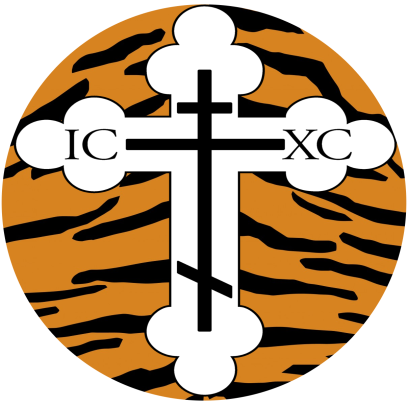Today, July 2 (June 19 in the old calendar) is the feast day of my patron saint, St. John of Shanghai and San Francisco.

This post is a little tribute to him. But first I would like to explain the role of the patron saint in Eastern Orthodoxy. The Orthodox church places a lot of importance on the idea that the spiritually mature Christians should help out the Christians who are just beginning their journey. This emphasis on mentorship manifests itself in several different ways. For example, instead of the best man and maid of honor in Western weddings, in the Eastern rite the bride and groom have a “sponsor couple”, an older married couple who are supposed to help, support, and pray for the newlyweds and they work through the struggles and joys of marriage.
The patron saint is another way where the church gives us guides for our spiritual journey. Each Orthodox Christian has a patron saint, whom we are supposed to have this mentor-mentee relationship with as well. They are our role models, guides, intercessors (we believe the saints pray for us even in death) and friends.
Brief biography
St. John was born in Kharkov, Russia (currently Kharkiv, Ukraine) in 1896. He served in his early life as a monk, priest, and a teacher in a Serbian high school, before being consecrated as bishop of the Russian Orthodox Diocese of Shanghai in 1934, a very tumultuous time in China.
There are remarkable accounts of his 15 or so years in Shanghai. He lived an extremely simple life, for instance walking through the streets barefoot in the winter during the Japanese occupation. He was extraordinarily dedicated to prayer, to the point that he barely slept. He performed great deeds of mercy and compassion during a time where there was a great deal of suffering. He founded an orphanage and frequently visited those in hospital and in prison. There are also many accounts of his gifts of clairvoyance and miracle-working from this time in his life.
Ultimately, with the communist takeover of China St. John was forced to flee with his church. Five thousand of them were refugees for a while in the Philippines, until St. John managed to lobby successfully for the right for them to settle in the United States.
In 1951, St. John was assigned to be Archbishop of the Archdiocese of Western Europe, headquartered in Paris, and then in 1962 to the Diocese of San Francisco. He passed away in Seattle on July 2, 1966, and his miraculously incorrupt remains lie in Holy Virgin Cathedral in San Francisco.
A modern saint
The first thing that struck me when I first heard about St. John of Shanghai and San Francisco was how strange his appellation was- Shanghai and San Francisco are two cities 10,000 kilometers apart! His life was an interesting juxtaposition. He was in some ways thoroughly immersed in our modern, globalized age, with a ministry spanning three continents and a proficiency in several different languages. But in other ways he seems as if you had picked up a man from the 2nd century A.D. and plopped him in the 1950s.
Very often Christians in our age make the excuse that the challenges and distractions of modernity make it impossible to surrender our lives as completely to God as the early Christians did. St. John shows us that this excuse is weak, by living a life of uncompromising simplicity, faithful prayer and joyous love in the 20th century, even while facing many thoroughly modern hardships. And we see all these wonders, healings and miracles appear in response to his prayers, as they did in the church of Acts!
With faith and love do we all honor thy memory today, O heavenly man and earthly angel; for thou was a true desert-dweller amid this greatly turbulent world. Having mortified all the passions, thou didst attain spiritual heights hard to see, and wast truly a most splendid miracle in the midst of the darkness of this age. Wherefore, we marvel at thy great glory in heaven, and with compunction we celebrate thy glorification.

[…] had the privilege of visiting Holy Virgin Cathedral in San Francisco, where the relics of St. John of Shanghai and San Francisco are […]
LikeLike
[…] was in San Francisco recently, to visit the relics of my patron saint, St. John of Shanghai and San Francisco (the previous link is my blog post about St. John). The relics are located at the Holy Virgin […]
LikeLike